Environmental Justice and Green Spaces in Ibadan Metropolis, Nigeria: Implications on Sustainable Development in Urban Construction †
Abstract
:1. Introduction
- Who are the disadvantaged population?
- What is the role of the government in ensuring environmental justice of green spaces?
- How does the existing distribution affect sustainable development in urban construction?
2. Methods and Materials
2.1. Research Design and Sampling Technique
2.2. Indicators for Assessing Environmental Justice (EJ)
2.3. Analytical Tools for Assessing Environmental Justice
3. Results
3.1. Pattern of Green Spaces in 2015 (Indicating the Extent of Disadvantaged Communities)
3.2. Environmental Justice Assessment
3.2.1. Principal Component Analysis
3.2.2. Ordinary Least Square and Geographically Weighted Regression (GWR)
3.2.3. Geographically Weighted Regression (GWR)
3.3. Perception on Green Spaces and Environmental Justice in Ibadan Metropolis
3.4. Implications of Environmental Justice of Green Spaces on Sustainable Development in Urban Construction
- (1)
- There is no fair or even distribution of green spaces in Ibadan Metropolis: Findings from this research project show that green spaces were clustered in some communities and communities which had no green spaces were also clustered. The theoretical explanation therefore from the environmental perspective shows that the attitude of Ibadan residents towards greening varies. While some have a positive attitude, others have negative attitudes, hence the uneven distribution of green spaces.
- (2)
- Government involvement of the people in the greening process is absence: Results and findings from the perception survey and Focus Group Discussion indicate that the government has accomplished little in ensuring the maintenance of green spaces and guiding against indiscriminately cutting of trees, etc. Reports from the FGD show that decisions on the environment are totally left in the hands of the people though their Landlord Association and community heads.
- (3)
- Laws, Policies and regulations on urban construction and development are not adhere to by government officials: Governmental officials such as the town planning authorities, Ministry of Lands, Housing and Development, Waste Management Authority and the Agency of Urban Beautification have not been carrying out their duties effectively. This is evident by the allocation of land for construction without proper layout spacing and consideration for green.
4. Conclusions and Recommendation for Sustainable Development
- ▪
- Restructuring of Ibadan Metropolis through Urban Revitalization and Environmental Planning: Revitalizing and restructuring the Ibadan metropolis will not go without a cost in terms of demolition of houses to accommodate green landscape, displacement of people and compensation plans by the government. A systematic approach of proper urban planning and environmental planning is required bearing in mind the concepts of environmental justice.
- ▪
- Using Religion Platforms in Promoting Greening Culture in Ibadan Metropolis: Findings and observation from the research project show that one way to promote a healthy social structure and strong environmental Justice system across communities in Ibadan Metropolis is through the various religions we have (Christianity, Islam and tradition, etc.). There is strong respect for religion, and most religions have respect for the environment. Therefore, religious platforms can be used to bring about awareness on the importance of green spaces.
- ▪
- Awareness of the climatic implications of greening through social media: The government show be more aggressive on educating its citizens on the importance of green spaces. Effective publicity can be achieved through social media: tv, newspaper, etc.
- ▪
- Policies geared towards greening culture by house owners: Behavioral attitude cannot be easily changed. Therefore, bearing this in mind the government should take more drastic measures such as passing into law for the greening of compounds by house owners. Defectors will then be persecuted or fined. This conscious movement will restore the quality of the environment.
Funding
Data Availability Statement
Conflicts of Interest
References
- Enger, S.C. Planning for Parks, Recreation, and Open Space in Your Community. Interag. Comm. Outdoor Recreat. Urban Plan. 2005, 57, 40–120. [Google Scholar]
- Turner, B.L.; Clark, W.C.; Kates, R.W.; Richards, J.F.; Mathews, J.T.; Meyer, W.B. The Earth as Transformed by Human Action: Global and Regional Changes in the Biosphere over the Past 300 Years; Cambridge University Press with Clark University: Cambridge, UK, 1990; p. 713. [Google Scholar]
- Lavalle, C. Toward an Urban Atlas: Assessment of Spatial Data on 25 European Cities and Urban Areas; Environmental Issue Rep. Copenhagen; European Environment Agency: Copenhagen, Denmark, 2002; pp. 1–99. [Google Scholar]
- McDonald, R.I.; Forman, R.T.; Kareiva, P. Open space loss and land inequality in United States’ cities, 1990–2000. PLoS ONE 2010, 5, e9509. [Google Scholar] [CrossRef] [PubMed] [Green Version]
- Chiesura, A. The role of urban parks for the sustainable city. Landsc. Urban Plan 2004, 68, 129–138. [Google Scholar] [CrossRef]
- Cutts, B.B.; Kate, J.D.; Christopher, G.B.; Alexandra, B. City structure, obesity, and environmental justice: An integrated analysis of physical and social barriers to walkable streets and park access. Soc. Sci. Med. 2009, 69, 1314–1322. [Google Scholar] [CrossRef] [PubMed]
- Davoudi, S.; Brooks, E. Environmental Justice and the City; Global Urban Research Unit, School of Architecture, Planning and Landscape Newcastle University: Newcastle upon Tyne, UK, 2012; pp. 1–171. [Google Scholar]
- Schlosberg, D. Defining Environmental Justice: Theories, Movements, and Nature; Oxford University Press: New York, NY, USA, 2007; pp. 1–123. [Google Scholar]
- Shrader, F. Environmental Justice Creating Equality, Reclaiming Democracy; Oxford University Press: New York, NY, USA, 2002; pp. 1–223. [Google Scholar]
- Rhodes, E.L. The Challenge of Environmental Justice Measurement and Assessment. Policy Manag. Rev. 2003, 2, 86–110. [Google Scholar]
- United Nations Conference on Environment and Development, Rio de Janeiro, Brazil, 3–14 June 1992. The Rio Declaration on Environment and Development. 1992, pp. 1–272. Available online: https://www.un.org/en/conferences/environment/rio1992 (accessed on 27 March 2022).
- Ikporukpo, C.O. Petroleum, Fiscal Federalism and Environmental Justice in Nigeria. Space Polity 2004, 8, 321–354. [Google Scholar] [CrossRef]
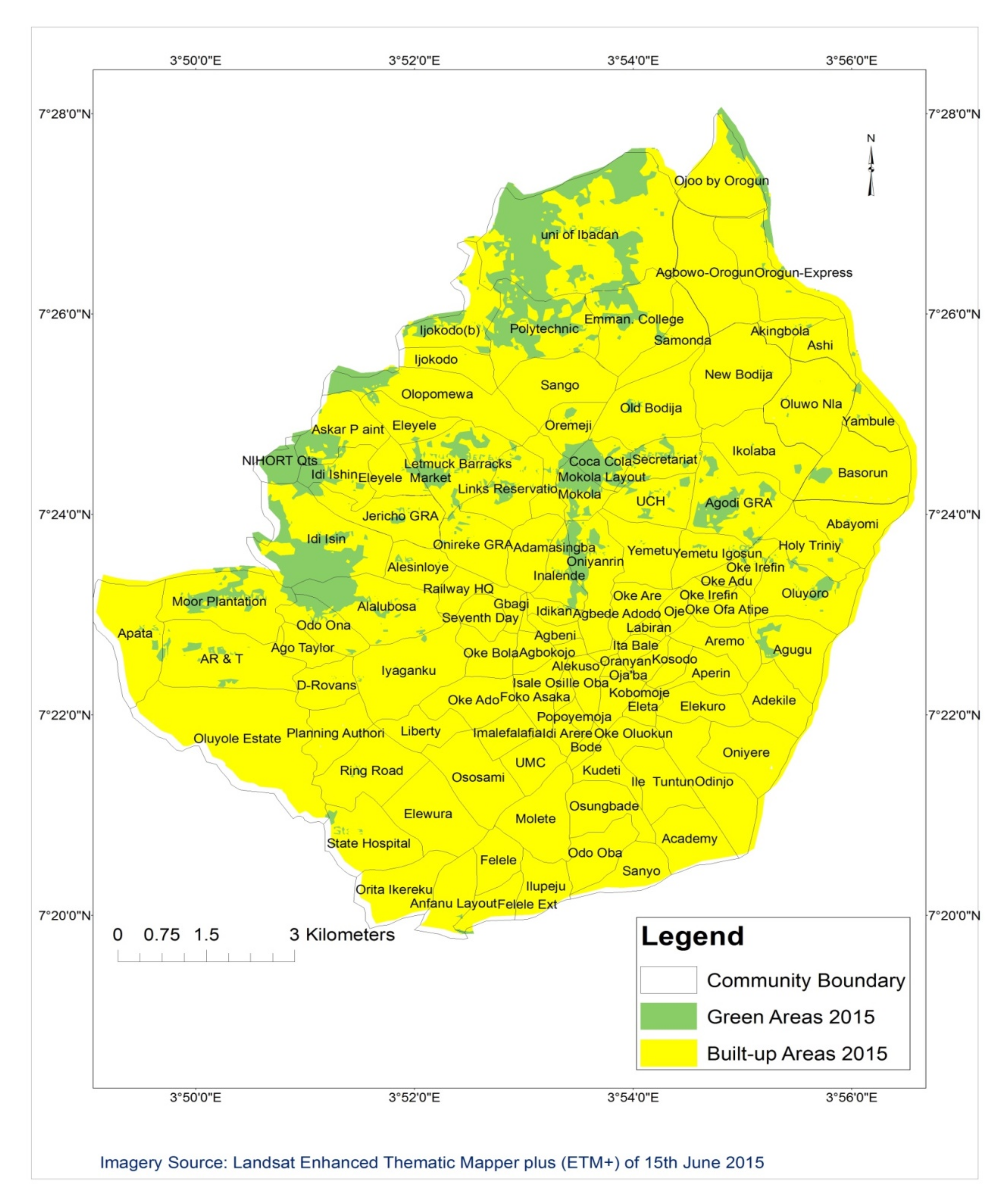
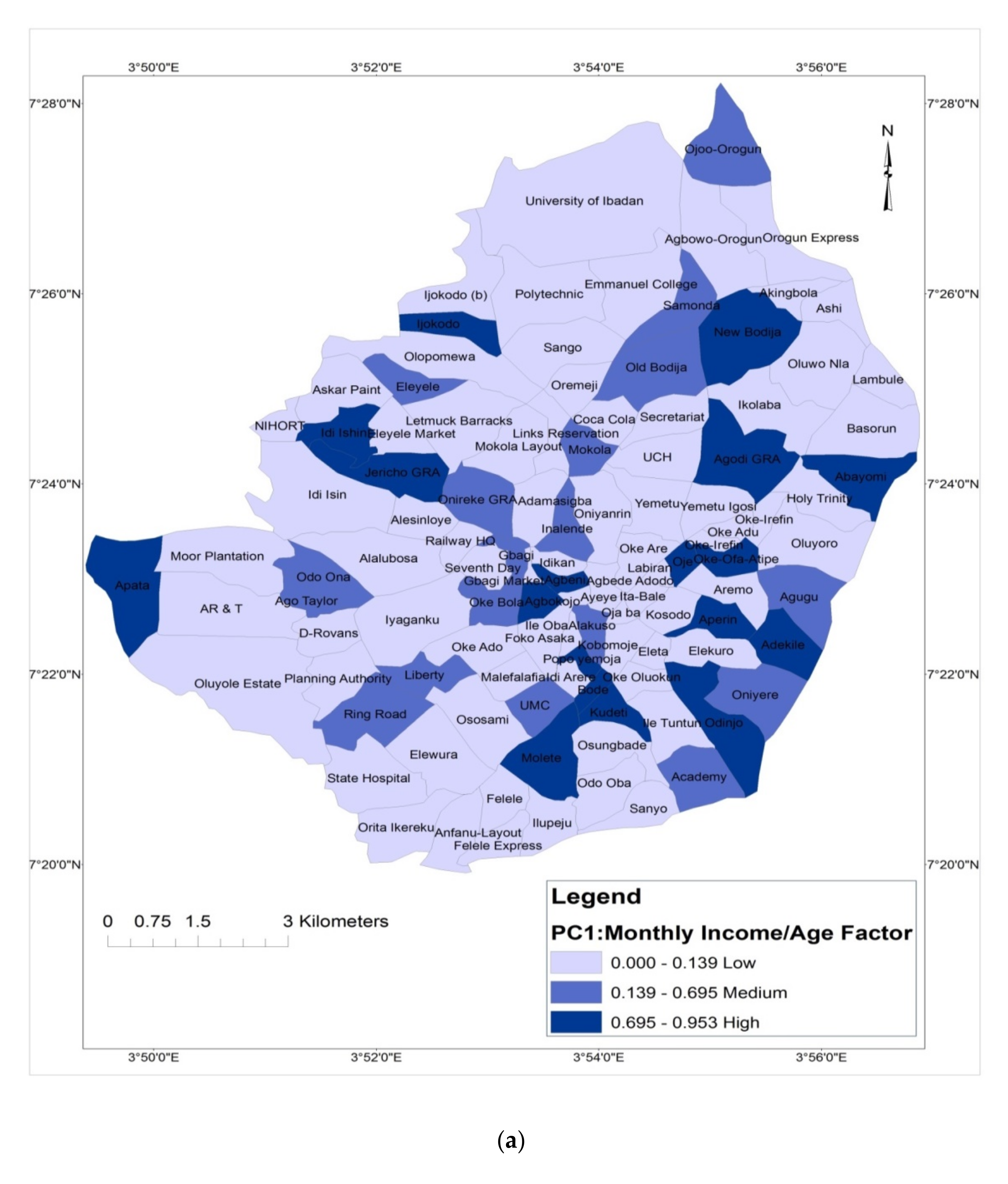
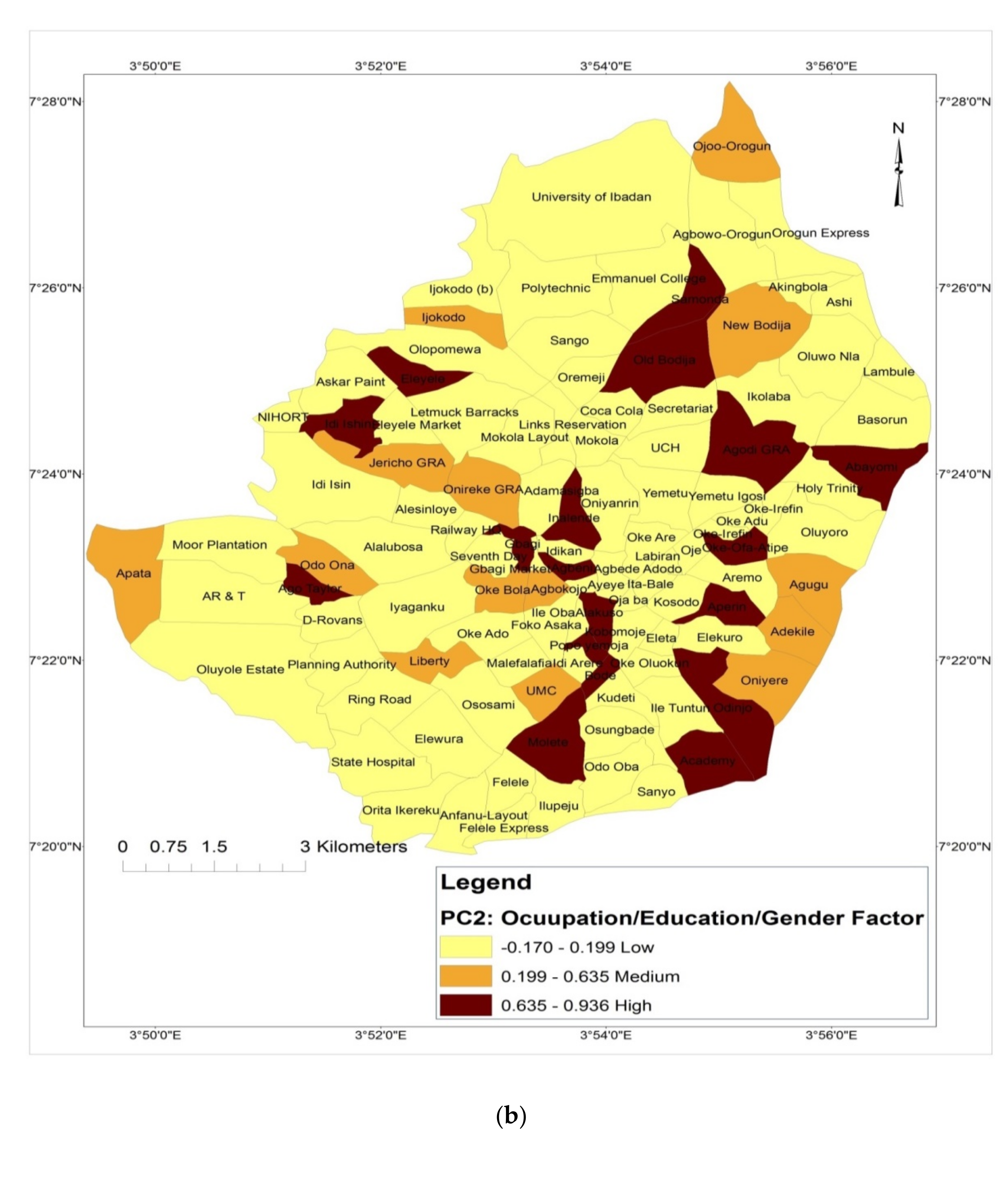

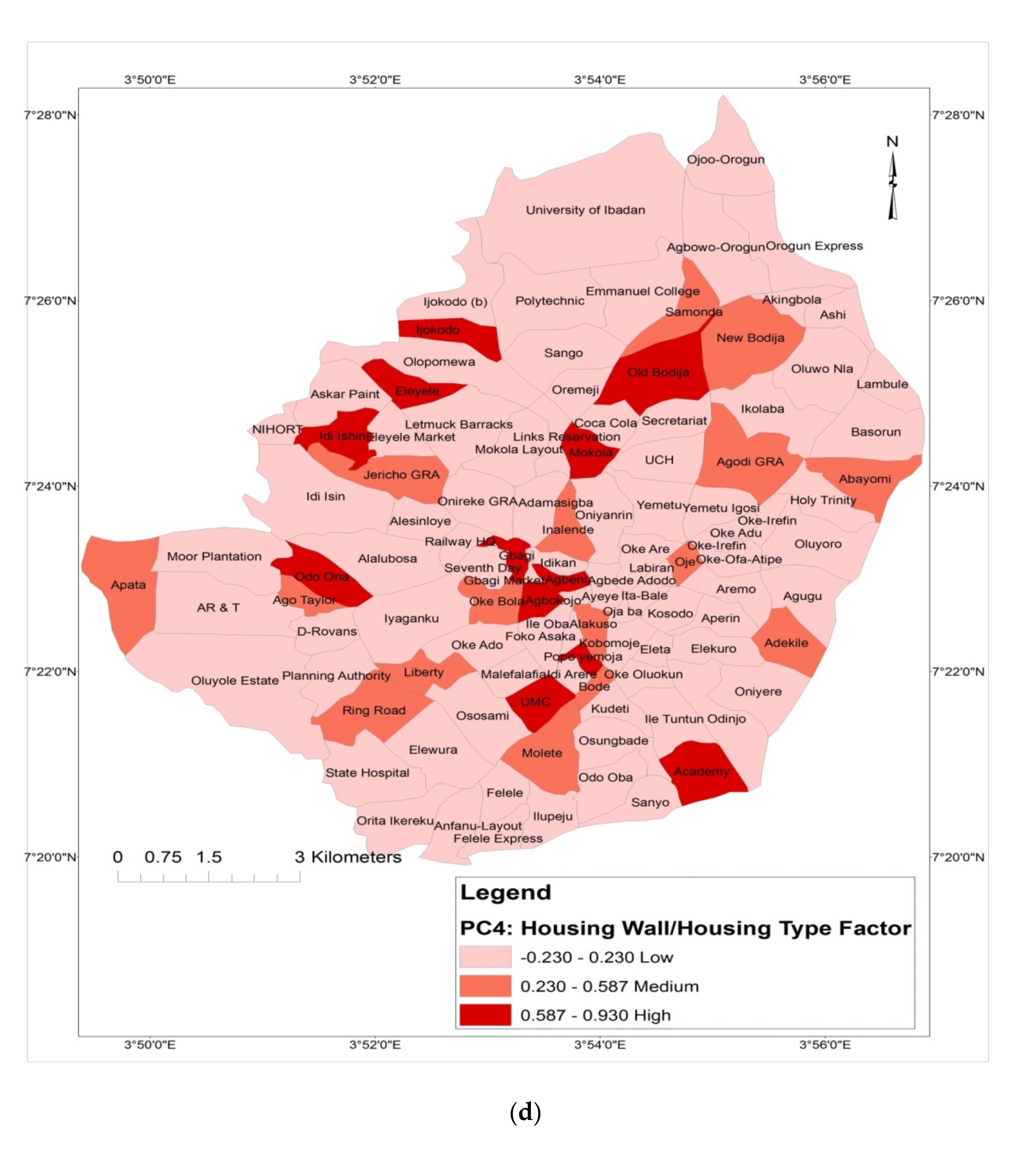
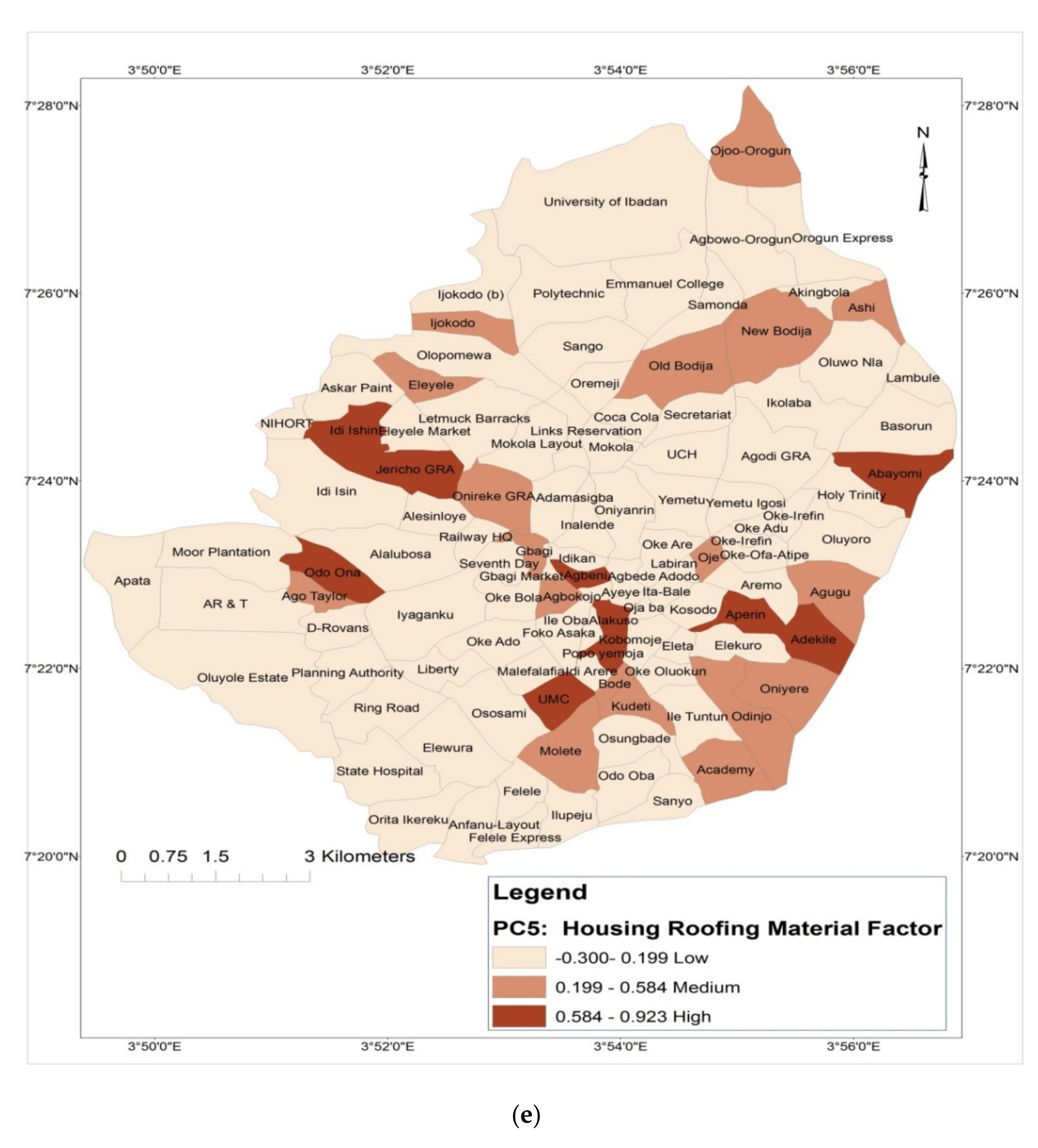
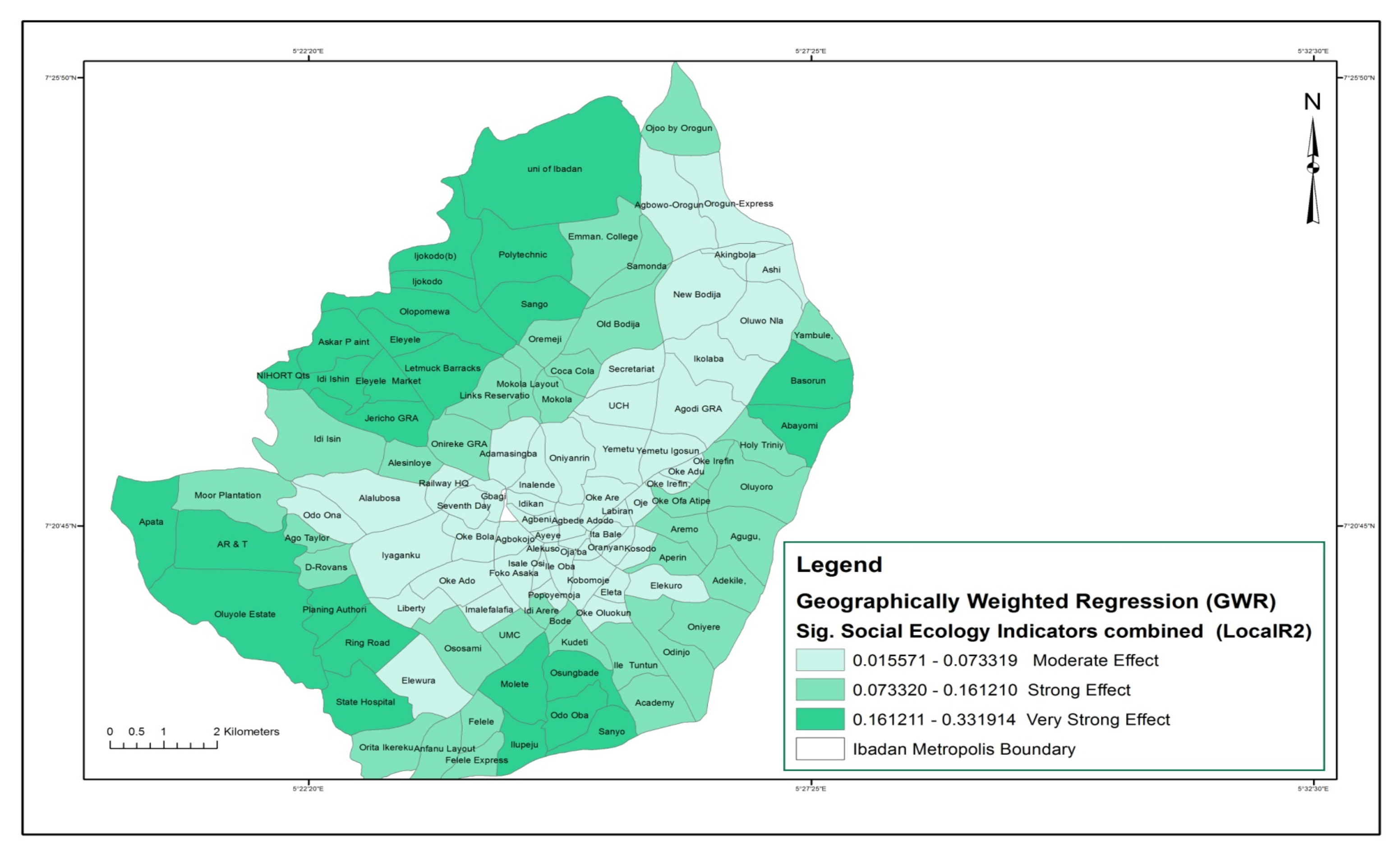
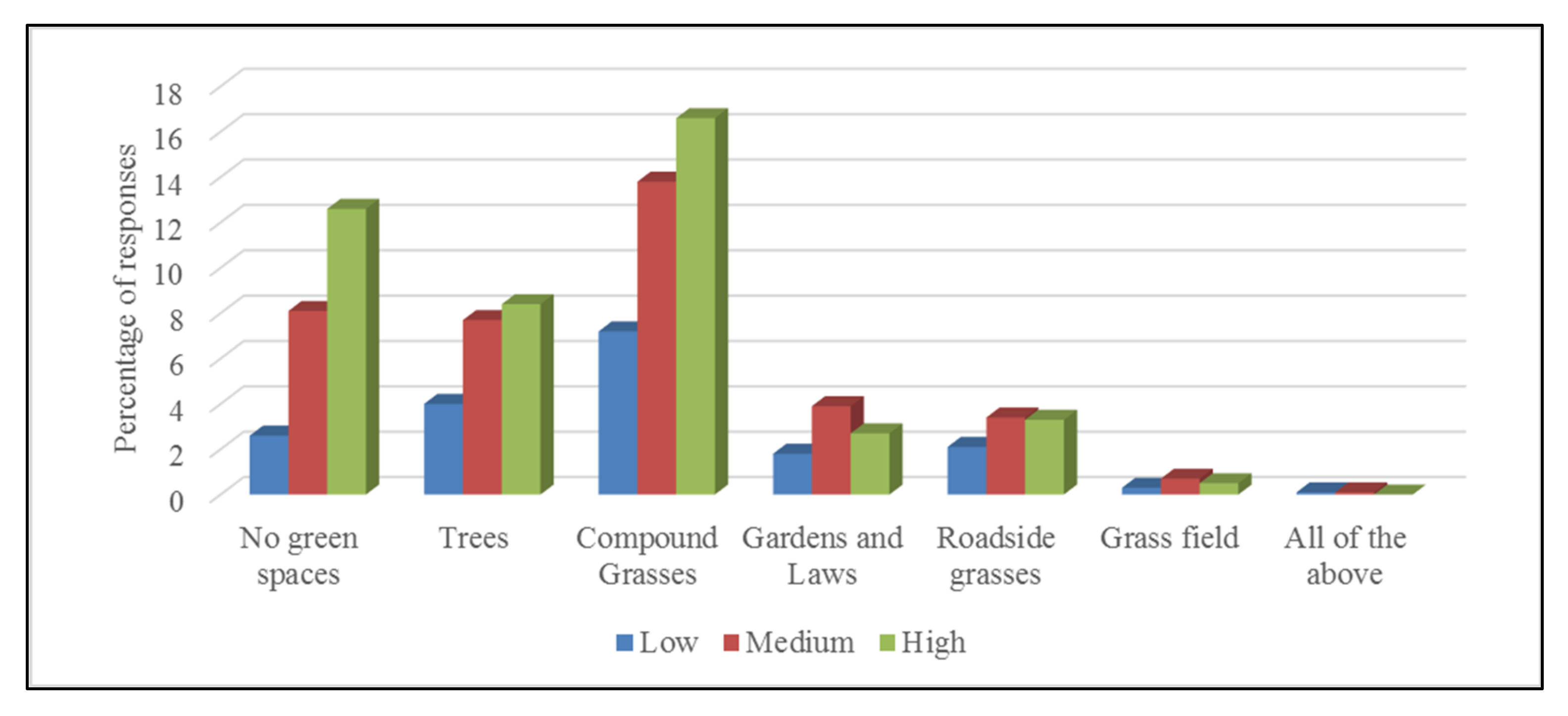
| Conceptual Contribution of Environmental Justice | Variables to Measure | References |
|---|---|---|
| Socio-economic Characteristics | [7,8,9,10,11,12] |
Publisher’s Note: MDPI stays neutral with regard to jurisdictional claims in published maps and institutional affiliations. |
© 2022 by the author. Licensee MDPI, Basel, Switzerland. This article is an open access article distributed under the terms and conditions of the Creative Commons Attribution (CC BY) license (https://creativecommons.org/licenses/by/4.0/).
Share and Cite
Areola, A.A. Environmental Justice and Green Spaces in Ibadan Metropolis, Nigeria: Implications on Sustainable Development in Urban Construction. Environ. Sci. Proc. 2022, 15, 57. https://doi.org/10.3390/environsciproc2022015057
Areola AA. Environmental Justice and Green Spaces in Ibadan Metropolis, Nigeria: Implications on Sustainable Development in Urban Construction. Environmental Sciences Proceedings. 2022; 15(1):57. https://doi.org/10.3390/environsciproc2022015057
Chicago/Turabian StyleAreola, Abiodun Ayooluwa. 2022. "Environmental Justice and Green Spaces in Ibadan Metropolis, Nigeria: Implications on Sustainable Development in Urban Construction" Environmental Sciences Proceedings 15, no. 1: 57. https://doi.org/10.3390/environsciproc2022015057
APA StyleAreola, A. A. (2022). Environmental Justice and Green Spaces in Ibadan Metropolis, Nigeria: Implications on Sustainable Development in Urban Construction. Environmental Sciences Proceedings, 15(1), 57. https://doi.org/10.3390/environsciproc2022015057






